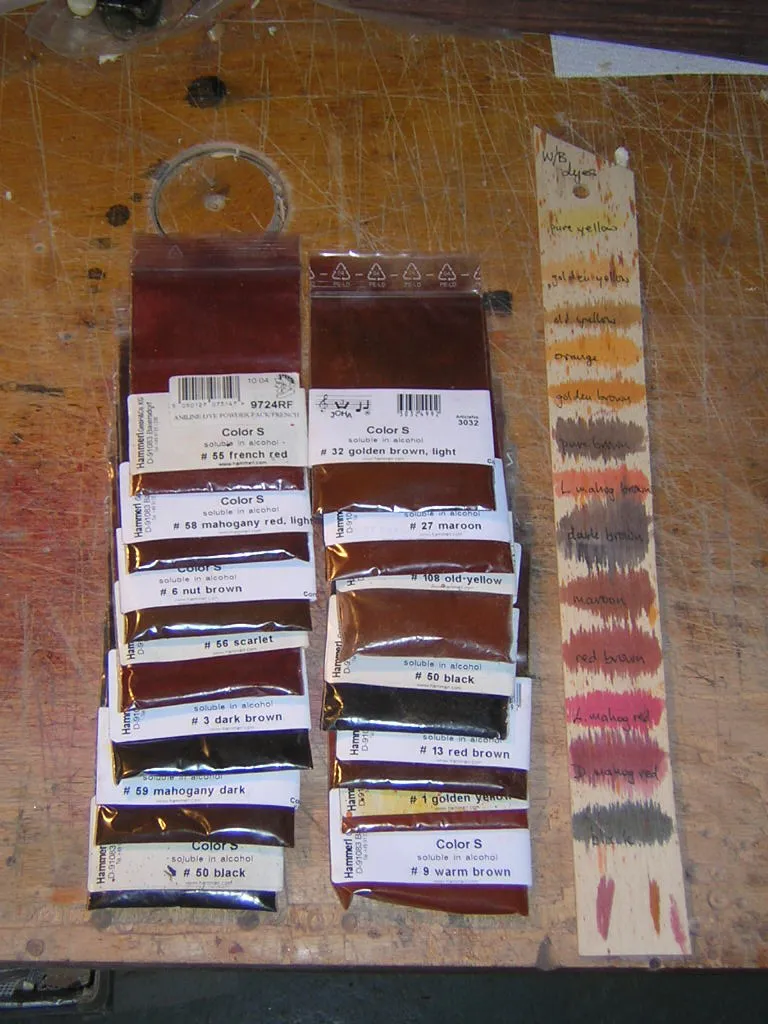|
Some terminology: Staining; the colouring of wood with pigment or dye. There are many types, which react differently with different woods. Pigment; very finely ground particles which lodges in the pores, scratches and defects of the wood. It is a suspension and is therefore opaque. When built up it hides the wood grain like paint. Also, it needs a binder to stick it to the wood, or once the 'solvent' evaporated, it would blow away like dust. Can be bought as powder. Dye; is a solution and colours the wood by saturating the wood fibres with colour. They allow the natural grain of the wood to show through. They need no binder. Originally of plant origin, they are now mainly aniline (a petroleum derivitive) and have very good resistence to fading. Can be bought as powder. Binders; are either oil, varnish, lacquer or water-based, which fix pigment to the wood. The binder does not affect the look, but does affect curing time. Grain-raising; certain applications will raise the grain when applied, notably water-based applications. Wash-coating; treating the wood to partly fill the pores before applying stain. It is used mainly to reduce splotching. A simple method is to apply a thin shellac mix (1/2lb cut). Once cured, lightly sand with 240 grit. Then apply colour. The thinner the coat, the less the pores are sealed. Glazing; applying a colourant (almost always pigment) after the wood's pores have been completely sealed, before or between finishing coats. Shadinbg/toning; applying stain in the finish itself. A combination of this and the above is used to create the 'sunburst' effect. Solvent; will dissolve a cured finish, turning a solid into a liquid. Thinner; will only thin a liquid, but not dissolve a cured finish. |
|
|
Problems:
Tips:
Solutions; I have found the simplest solution to the complex maze of stain and finish matching and compatibility is as follows...
|
|
|
Water-based Aniline Dyes |
|
|
There are a variety of different dye types, with different solvents, oil, water and alcohol. I tend to use water-based for the following reasons... The advantages of water-based are...
disadvantages are...
|
|
|
Some tips for using w/b analine dyes...
apply to the instrument as follows.......
|
|
| Right is a good selection of colours that covers those most often found on German instruments, plus my colour 'swatch'. Other tints may be created by mixing. It can also be seen that the powdered colour is NOT the same colour as when it is is mixed with water. Most of the powders appear brown. | |
